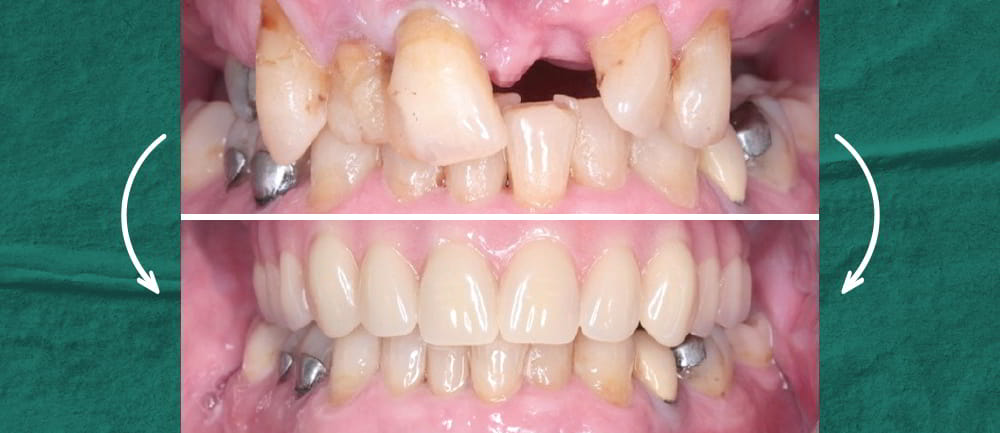Poor oral hygiene over a long period will inevitably begin to erode the teeth. They’ll begin to lose their white glow as the enamel breaks down. You will feel pain, and they might begin to feel loose and even fall out. It is a slow, gradual process which occurs when the teeth aren’t cared for effectively. Over a long period, many older people will start to feel this effect as they age. But what happens when you start losing teeth? Implants could be the answer for you.
If you haven’t cared for your teeth over the years, it’s possible to suffer from mild to extreme gum disease.
Gum disease is progressive and will slowly cause damage to the supporting tissue in the mouth. This leaves your teeth feeling weaker and more vulnerable. If the gum disease develops into periodontitis, the jaw bone will begin to show significant signs of damage. If the jaw becomes too damaged and too weak, this could also hinder your chances of having dental implants to replace any lost teeth. Because dental implants rely on a dense jaw bone for insertion, a weaker jaw bone may struggle to heal correctly around the implant. This can cause many more issues. If this is the case, bone grafting may be required as an additional step during your implants procedure.
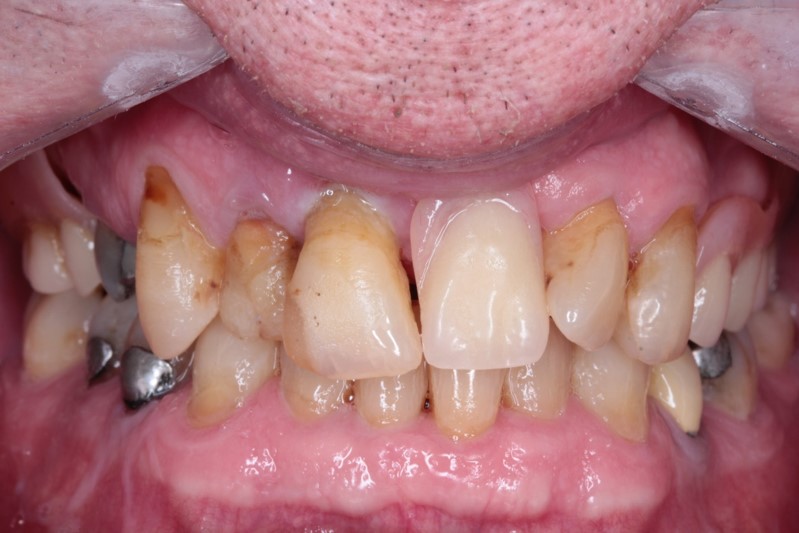
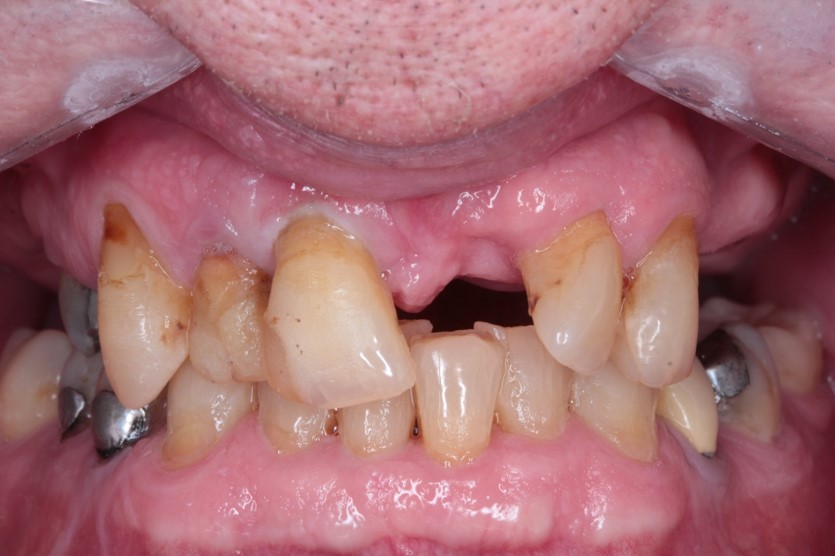
A patient who was seen by Dr Bagasi had a similar story, which led him to look for a more permanent solution for his unpleasant smile. At the time of the initial consultation, he was missing a few teeth in his upper jaw. He was generally unhappy with the appearance of the upper jaw and the denture he was currently wearing. After a brief check of his mouth, Dr Bagasi recommended having a full upper arch implant-retained bridge. This procedure requires full clearance of the upper jaw. This was just what the patient was looking for. He couldn’t wait to begin his treatment!
Step one: implant preparations
The initial checks were done to clear the patient for implant surgery. He had a full, digital CT-scan to assess the jaw bone level. This allowed Dr Bagasi to plan where the implants would be placed in the jaw for the best results. After the full CT-scan surgery guide was created by our specialist technicians, the patient needed to consent for the treatment before it could continue. His appointment was then booked.
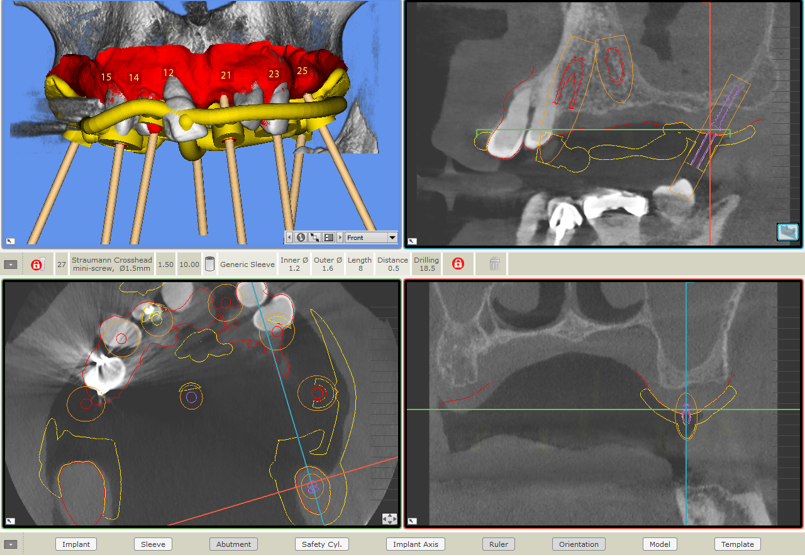
A detailed report was sent to him to read over. Here, the steps for the surgery, risks, benefits, costs, and further advice was all compiled for the patient to consent to. He signed the report. Dr Bagasi booked the surgery soon after!
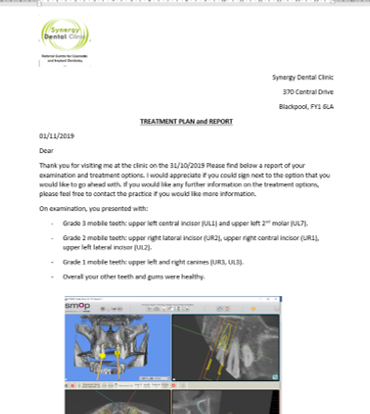
Step two: implant surgery
The procedure aims to have the implants surgically inserted into the jaw where they can fuse with the jaw bone. Luckily, Dr Bagasi determined no reason for bone grafting, as the bone was healthy enough to begin with. The patient did require full clearance of the jaw, though, to make room for the implants. This meant that the remaining teeth in his upper jaw were removed from the mouth.
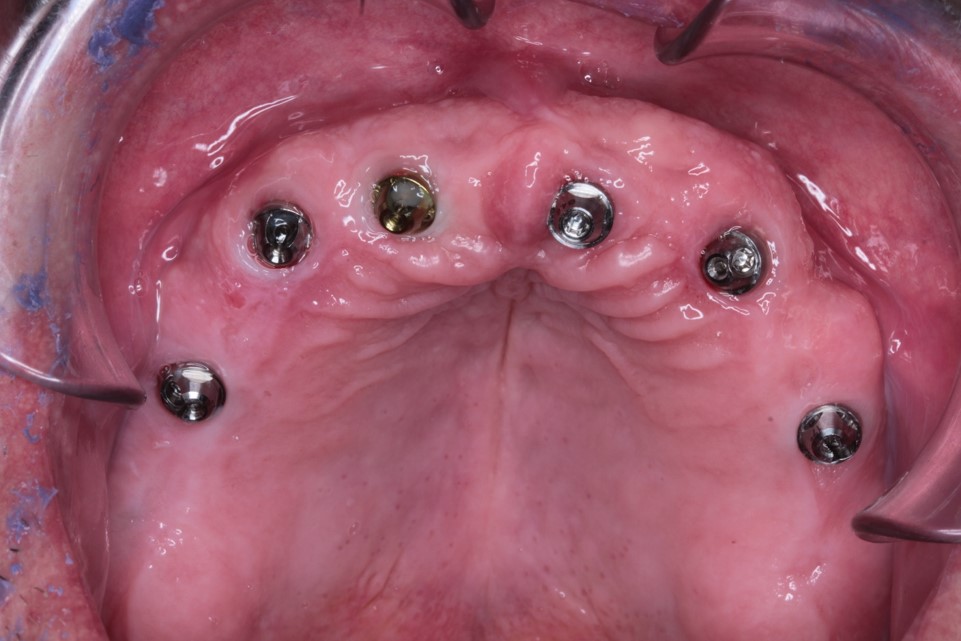
The surgery went according to Dr Bagasi’s expectations and was executed without any problems. With the help of the CT-scan surgical guide, the placements of the implants were much more precise.
Step three: healing, impressions, and bridgework
Healing must be carried out for at least three months after surgery. Implants require time to fuse with the jaw bone, which gives them the unique secure fit that dentures lack. Furthermore, if any unnecessary force is applied to the healing implants, there’s more risk of further damage occurring and your implants failing. This patient’s healing went by quickly, as he was issued a customised temporary denture to see him through the three months. This ensured he was not left feeling uncomfortable.
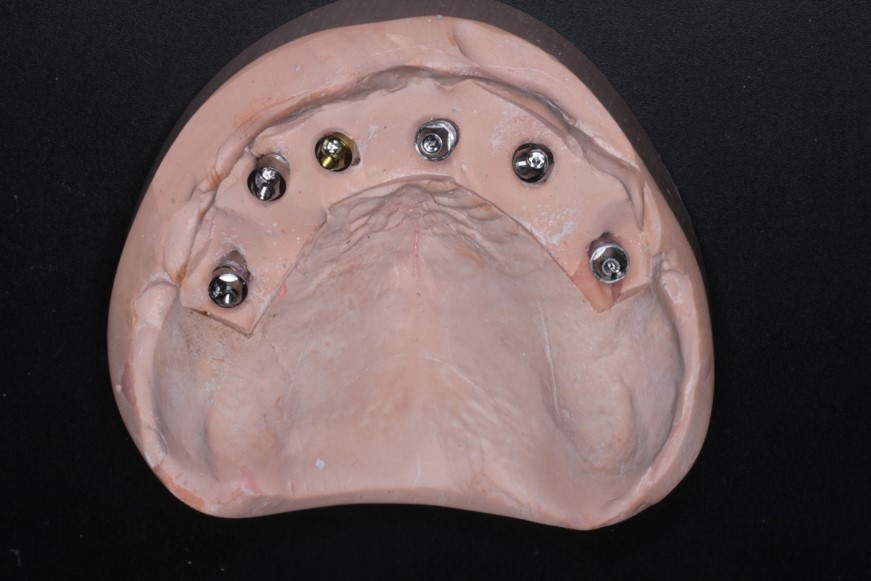
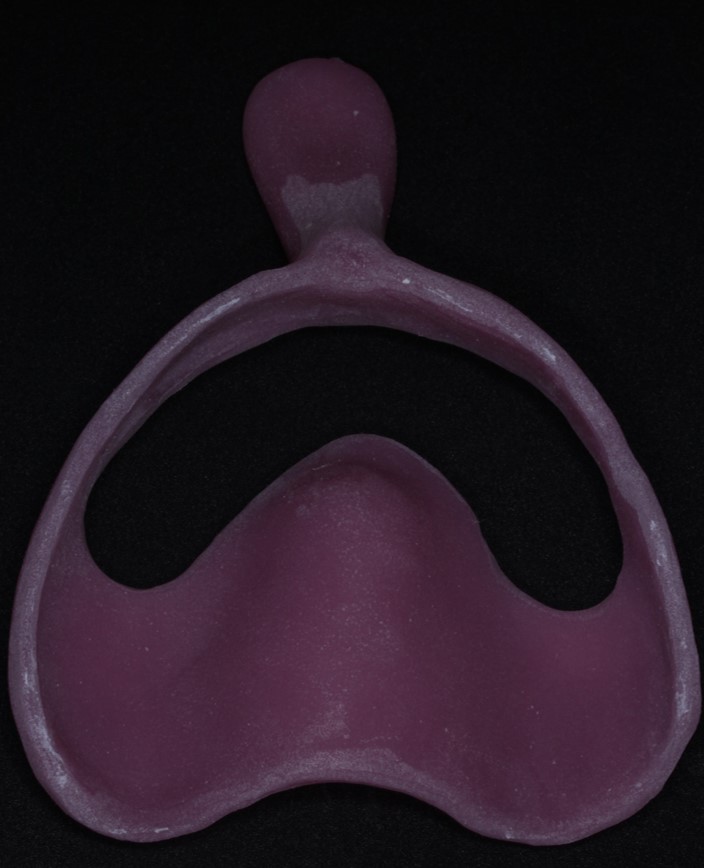
Once healed, Dr Bagasi re-booked the patient in to have his impressions taken. This can either be carried out digitally, through a digital scanner, or using traditional moulds. Dr Bagasi used traditional impression moulds for this patient. Impressions show how the bridgework needs to be made to have a comfortable and unique looking fit. In addition to moulds being taken, the multi-unit-abutments (MUA) are created to permanently attach the bridgework to the implants.
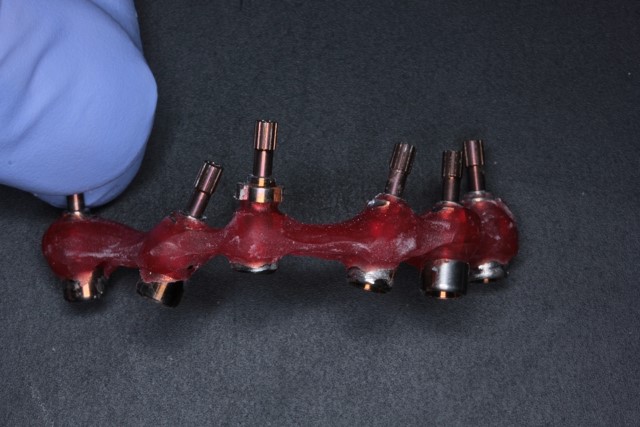
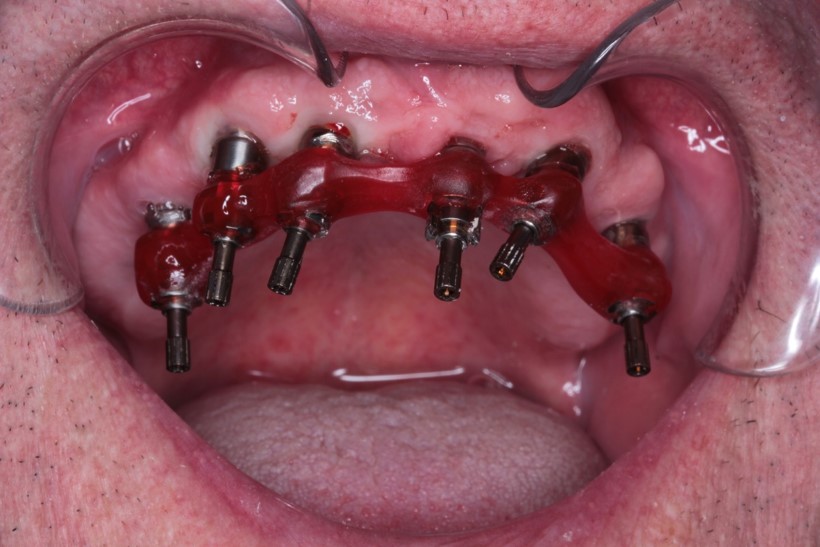
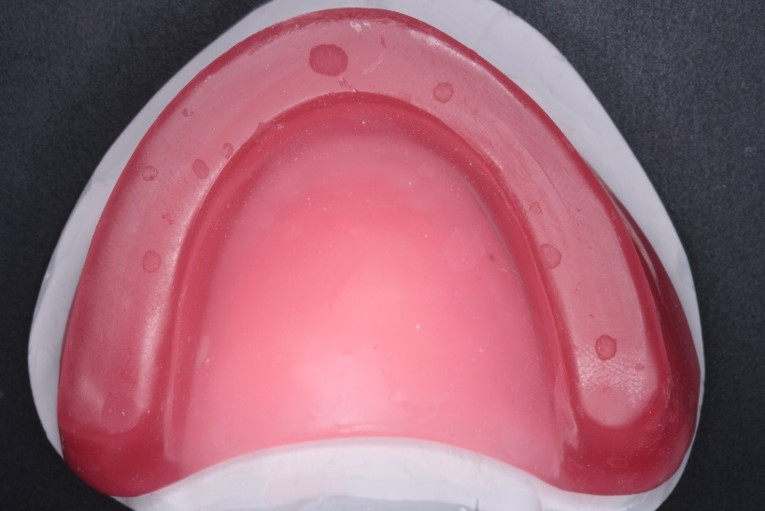
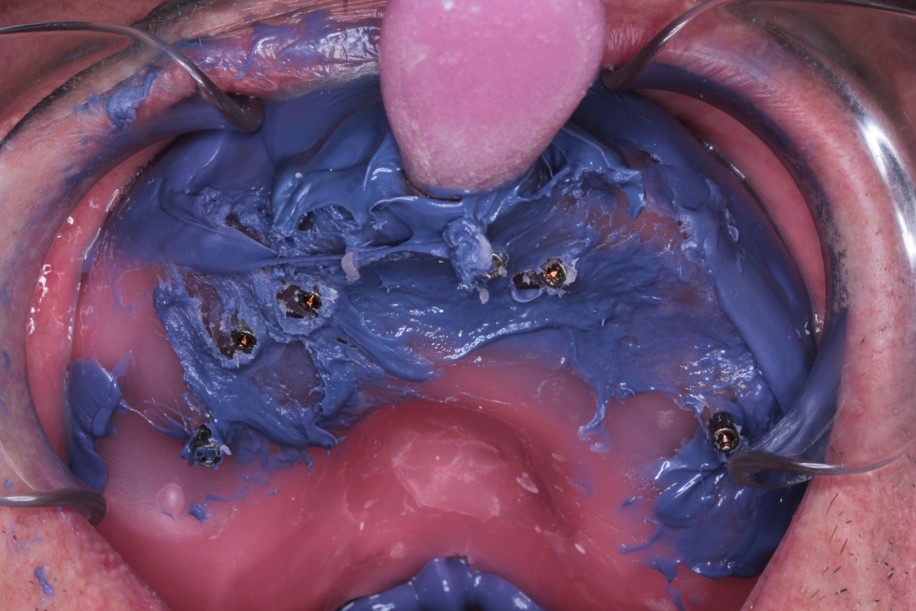
The last few steps required a Duralay jig to be created to replicate the titanium framework. Moulds will also be taken over these once completed. Bite registration is taken, followed by a second set of impressions to send off to the lab. Once all of this is completed, the patient had the opportunity to try in a wax-up set of his final bridgework. This is done to make sure both Dr Bagasi is happy and the patient is comfortable. The wax try will then be conducted once more with the final titanium frame. Again, this ensures everything is comfortable and looks natural for the patient.
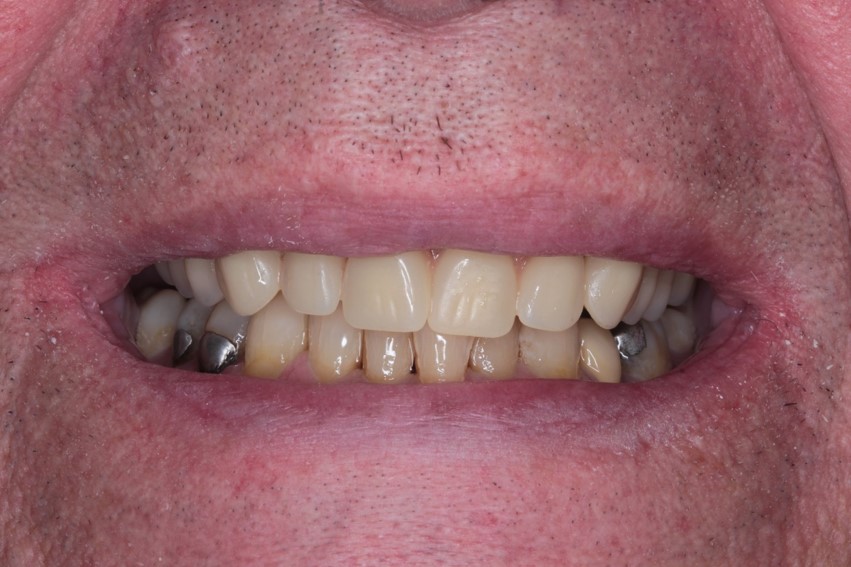
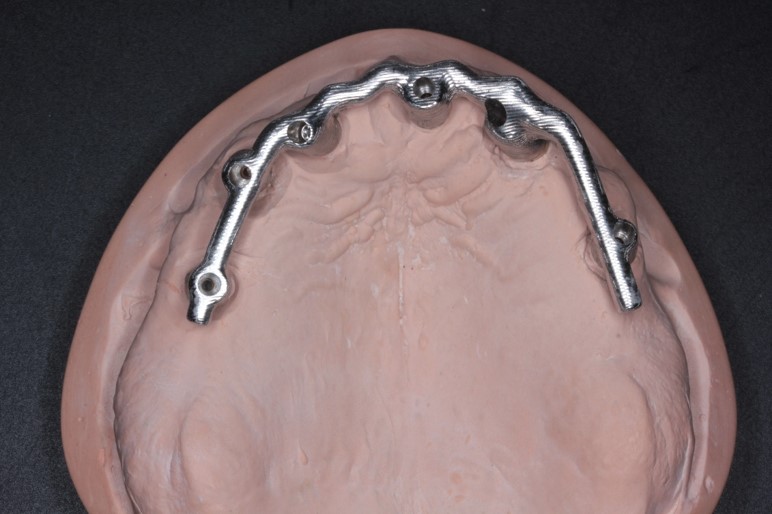
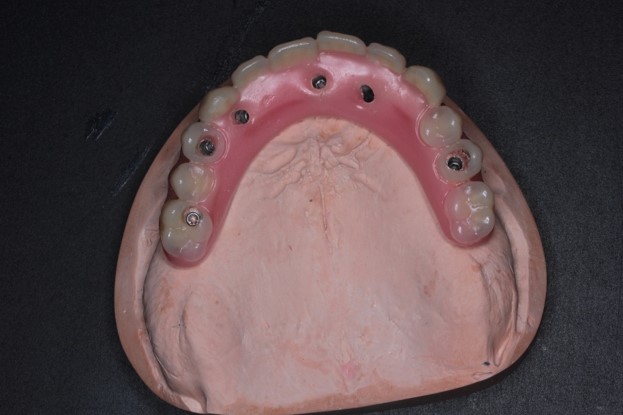
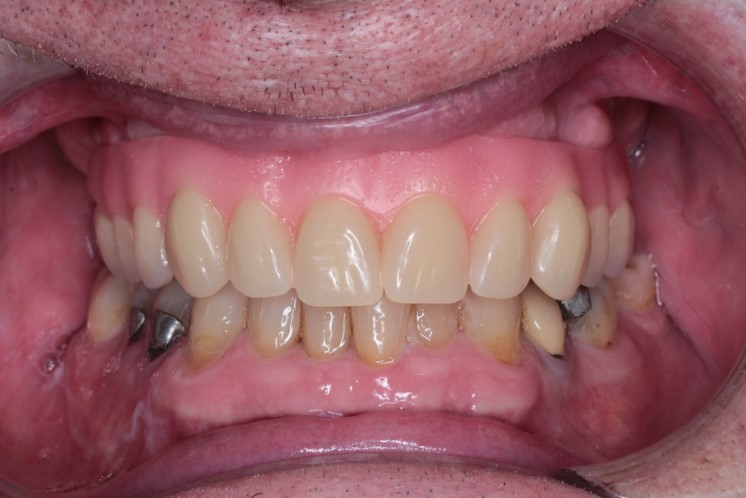
Step four: final fit
This is the stage each patient looks forward to the most (and so does the dental team!). At this stage, the patient gets to see what the last few weeks of hard work had created. This patient was incredibly happy with the results. He not only had a beautiful set of new teeth. Additionally, he also had the opportunity to care for his new teeth.
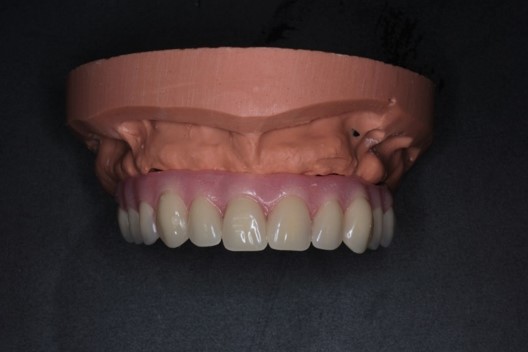
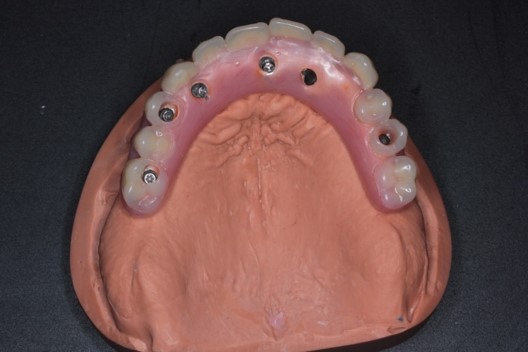
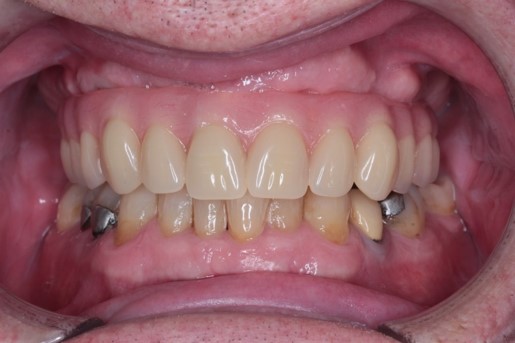
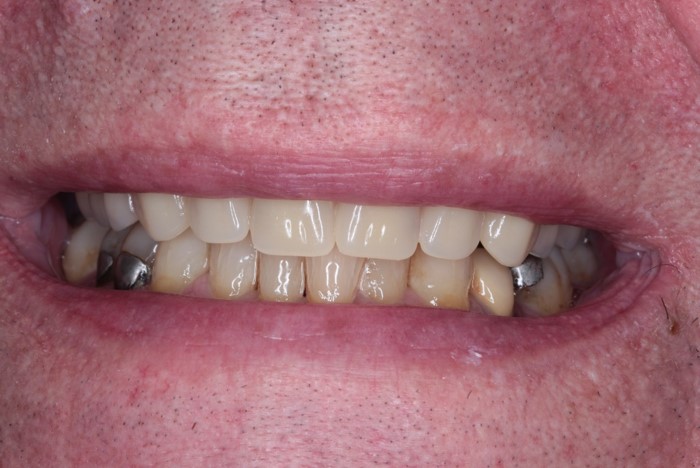
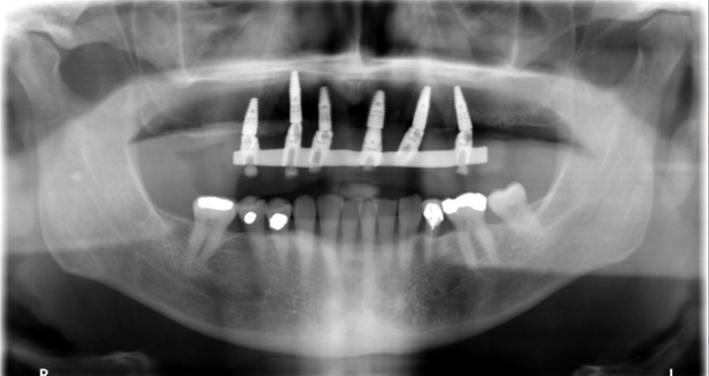
Just because implants are artificially created and attached, doesn’t mean they should not be cared for any less than real teeth. Implants should be thought of as a second-chance rather than an easy solution for caring for teeth. Once the patient was issued with the appropriate aftercare advice and necessary upkeep routine, he was free to enjoy his new teeth. He could now show them off to his friends and family!
Unsure about your dental health? Call your nearest Synergy Dental Clinic and we’ll be happy to

